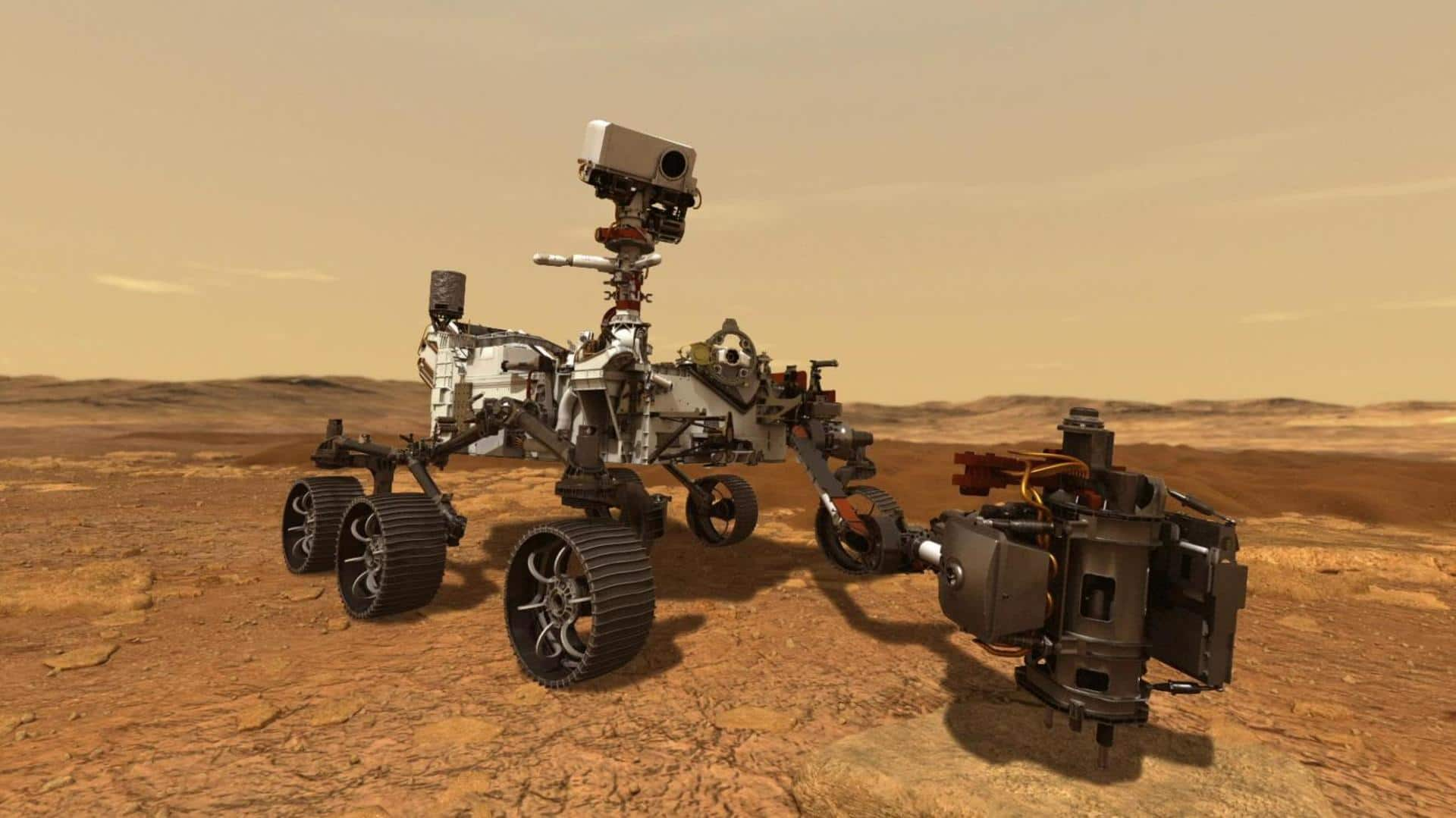
Significance of the sample depot constructed by NASA's Perseverance Rover
What's the story
The Perseverance Rover (nicknamed 'Percy') recently completed building a sample depot on Mars. This is the first time that a sample repository of this kind has been constructed in another world and this also marks a big milestone for the mission.
Let's take a closer look at what these samples are and how they could provide clues about life on the Red Planet.
Sample Depot
Why was the sample depot built in the first place?
NASA, along with ESA, aims to bring samples from Mars to Earth for closer study, via the Mars Sample Return campaign.
The Perseverance Rover has been collecting samples in duplicates. While one set of samples is stashed away in the rover's belly, the other set serves as a backup collection of specimens that could be recovered in the future.
Process
How will the Rover deliver the sample tubes?
If everything goes well, Martian samples could be brought back as early as 2033.
The rover will deliver samples, along with future specimens collected during the mission, to a rocket-equipped NASA lander, called the Sample Retrieval Lander.
The rocket will then send the samples to the ESA probe—Earth Return Orbiter—positioned in the Mars orbit which will then be brought to Earth.
Backup
What happens if Percy is unable to deliver the samples?
If Percy is unable to deliver the samples directly to the rocket, the samples could be retrieved from the depot instead.
In such a case, two small helicopters will collect the sample tubes from the depot and bring them back to the lander one by one.
These helicopters will launch aboard the lander in 2028 and will be based on the Ingenuity Mars helicopter.
Information
The NASA lander would dock near or in Jezero Crater
The ESA orbiter and NASA lander are scheduled to launch in 2027 and 2028, respectively. The Sample Retrieval Lander would land near or in Mars' Jezero Crater and would be the first-ever spacecraft to carry a rocket to another planet and launch it from there.
Jezero Crater
The depot is built in the 'Three Forks' region
Talking about the sample depot, it lies in the region in Mars' Jezero Crater called 'Three Forks.'
It is theorized that a river flowed into this crater, billions of years ago, carrying sediment that formed the steep, fan-shaped delta.
Scientists believe that this area was once abundant in water and could possess crucial information about possible traces of life on the now-barren Red Planet.
Depot construction
How long did it take to construct the depot?
The samples collected by Percy could help scientists answer the question if life ever existed on Mars.
Percy began constructing the depot on December 21, 2022 and completed building it on January 28, 2023.
The depot comprises 10 sealed titanium sample tubes placed in a zigzag pattern with a distance of about 15-50 feet between each tube to ensure they can be safely recovered.
Sample types
What type of rock samples are housed in the depot?
The depot is composed of three sample types: rock core, atmospheric sample, and regolith (broken rock and soil).
The 10 samples have been designated with names as follows: Roubion, Montdenier, Coulettes, Malay, Atsah, Skyland, Bearwallow, Mageik, Amalik, and Crosswind Lake.
Out of the seven rock core specimens, Montdenier, Coulettes, Malay, and Atsah are igneous rocks while Skyland, Bearwallow, and Mageik are sedimentary rocks.
Details
Mageik is the longest rock core sample collected by Percy
Crosswind lake is of the regolith type, likely a mixture of sedimentary and igneous rocks and Roubion is an atmospheric sample.
The Amalik specimen is what's called a witness tube. It will be used to assess the purity of the samples that have been collected by Percy.
Mageik is the longest rock core picked up by the rover and it measures 2.9 inches.
Location
Take a look at the sample depot
The rover recently snapped a picture of the complete sample depot. The picture was taken using the Mastcam-Z camera on the top of rover's mast, or "head," on January 31.
The Mageik and Malay samples are farthest from the rover, at approximately 197 feet away whereas Amalik is closest to the rover and lies about 10 feet away.